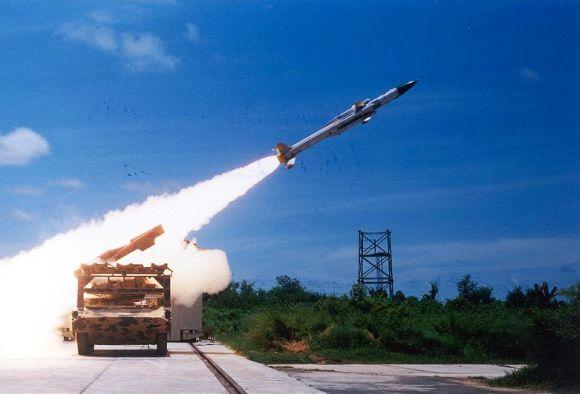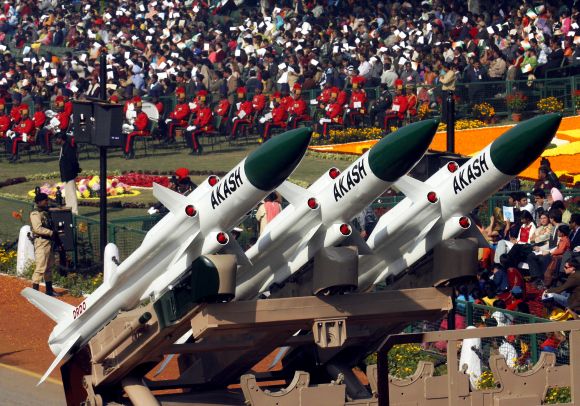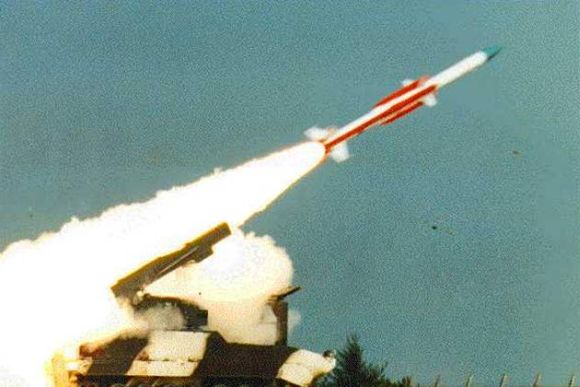
Top DRDO scientists say indigenous missiles would cost barely half as much as a foreign alternative, reports Ajai Shukla.
At the tightly guarded "Missile Complex" outside Hyderabad, three Defence Research & Development Organisation laboratories will, for the first time, provide the military with a range of indigenous tactical missiles.
With India's air defence network in tatters and its warships desperately needing protection from incoming anti-ship missiles, the defence ministry blocked foreign purchases to give the DRDO time to develop indigenous missiles.
Now, over the coming decade, the military is poised to buy about Rs 1 lakh crore worth of DRDO-developed missiles. Top DRDO scientists say indigenous missiles would cost barely half as much as a foreign alternative.
The director of the pivotal Defence R&D Laboratory, A K Chakrabarti, confirmed to Business Standard during an exclusive visit to the Missile Complex that the Indian Air Force and Army had already placed orders worth Rs 24,000 crore for Akash surface-to-air missiles.
Please ...

He said the navy had ordered long range-surface to air missiles worth more than Rs 2,600 crore for the navy's destroyers and frigates that were under construction.
And Subir Kumar Chaudhary, the director of DRDL's sister laboratory, Research Centre Imarat, revealed the air force had ordered Rs 8,600 crore worth of medium range-surface to air missiles.
V G Sekharan, director of the Advance Systems Laboratory, which developed the Prithvi and Agni ballistic missiles, declined to quantify the values or numbers of ballistic missiles ordered by the Strategic Forces Command, which operates India's nuclear deterrent.
Informed ministry of defence sources estimate more than Rs 10,000 crore worth of missile systems have been delivered, or are on order for, the five missile groups already in service: two holding Prithvi missiles; a third holding Agni-I missiles; a fourth holding Agni-II missiles; and a fifth now being raised with Agni-III missiles.
In addition, a DRDO joint venture with Russia is producing and delivering Brahmos supersonic cruise missiles for the army and navy.
Besides this, DRDL scientists claim they are close to success on the Nag anti-tank guided missi#8804 and some way from success on the air-to-air missile, Astra. The Nag and Astra could yield large orders when they meet user requirements in testing.
Please ...

The DRDO has a monopoly on strategic ballistic missiles like the Prithvi and Agni series, since the missile technology control regime prohibits signatories from exporting missiles with ranges above 300 kilometres. Now, there is relief within the DRDO that military is ordering even tactical missile systems like the Akash, which faces international competition.
"The strategic missile programme has no competitors. But the tactical missile programmes are always under threat from foreign alternatives. If you don't deliver (the missile systems) in time, or with the required quality, the users will buy from abroad," says Chaudhary, the RCI director.
Leading the charge of successful tactical missiles is the Akash, which the army and air force steadfastly rejected for two decades, leaving army strike corps and IAF bases woefully unprotected as their vintage Russian missile systems became obsolescent, and then obsolete.
But the MoD repeatedly turned down army and IAF demands to import foreign missile systems, backing the indigenous Akash.
In 2008-09 the air force reluctantly ordered two squadrons of Akash for protecting the key air bases of Pune and Gwalior.
Being assembled by Bharat Electronics Ltd in Bangalore, the first of these will enter service this month, followed by the second in June 2013.
Please ...

After that initial order, the IAF lost no time in embracing the Akash. In 2010, it ordered another six squadrons of the Akash, for protecting its bases in the north-east, on the Sino-Indian border.
In March 2011, the army placed a whopping order for two Akash regiments. Bharat Dynamics Ltd will build the army version, mounted on the infamous Kolos Tatra. Trials of the first Tatra-mounted Akash system are scheduled for June 2013.
The DRDO says it conducts regular test firing, along with the military. "The IAF was pleased with its Akash firing tests, most recently in May-June 2012, when it fired five missiles at difficult incoming targets, which were flying just 30 metres high at almost the speed of sound. Four out of those five missiles destroyed their targets," says Chakrabarti.
The Akash system's Rohini radar picks up enemy fighters out to 120 kilometres, shooting them down at ranges of 25-30 kilometres, and altitudes of up to 18,000 metres (60,000 feet).
Ongoing R&D has also given Akash "a low-altitude interception" capability, enabling it to shoot down aircraft that are just three kilometres away.
...